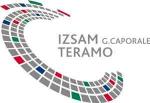Suvaxyn® CSF Marker, the first live marker vaccine against Classical Swine Fever Disease authorized at European level
Poster presented in Xth International Congress of Veterinary Virology (ESVV) "Changing viruses in a Changing world"
August 31st, 2015
Juanola S., Urniza A., Uttenthal A., le Potier LF., Kulcsar G., Loeffen W., De Mia GM., Hofmann M., Rossi S., Gao R., Belak S., Moennig V., Sanchez-Vizcaino JM., Hans-Hermann T., Calistri P., Delater N., Koenen F. and Beer M.
Classical swine fever (CSF) is a highly contagious viral disease affecting pigs, which can lead to a tremendous socioeconomic
impact. Within the European Union (EU) and in other areas with significant pig production, the disease is controlled by strict, mandatory control measures without prophylactic vaccination. However, emergency vaccination is usually foreseen and can be implemented in the case of a contingency. From a trade point of view, only marker vaccines are feasible that allow differentiation of infected from vaccinated animals. First generation marker vaccines,
i.e. different E2 subunit vaccines, were hardly ever employed due to the fact that these vaccines lacked efficacy upon single application and did not provide early onset of immunity. Within two collaborative research projects funded by the 6th and 7th EU Framework Programs (Grant No. SSP1-501599 of FP6, Grant No. 227003 CP-FP of FP7),
a potent new live marker vaccine was developed, validated and finally licensed as Suvaxyn® CSF Marker through the European Medicines Agency in February 2015.
To choose the most promising vaccine candidate, comparative trials were conducted within the CSFV_goDIVA project.
Based on experimental studies and additional data, the chimeric pestivirus “CP7_E2alf” was chosen as final candidate.
This chimera has a Bovine viral diarrhea virus “CP7” backbone and carries the glycoprotein E2 of CSF virus (CSFV) strain “Alfort/187”. The marker concept is based on the detection of antibodies directed against CSFV Erns.
The safety and efficacy studies required by the European Pharmacopoeia and the OIE Manual of Diagnostic Tests and Vaccines were divided among the project partners.
All safety studies showed innocuousness and complete safety for target and relevant non-target species, and no evidence was found for vaccine virus transmission to contact animals. Moreover, the virus did not cross the placental barrier in pregnant animals and did not affect the reproductive performance. In addition, the vaccine
virus in itself is not able to induce persistently infected offspring. Efficacy was proven against highly virulent CSFV strain “Koslov” (genotype 1) and relevant CSFV strains of genotype 2. Varying degrees of protection were seen in young animals with maternally derived antibodies and with regard to vertical protection after harsh and early challenge. Onset of immunity was proven after 14 days (in supplemental studies, protective effects were seen after 2 days) and duration of immunity was at least six months.
Apart from the studies carried out for licensing as a live marker vaccine for domestic pigs that can be intramuscularly injected, the vaccine strain was also tested as oral marker vaccine. Also these studies were most promising and a bait marker vaccine for wild boar is feasible.
Taken together, Suvaxyn® CSF Marker (Zoetis) is the first live CSF marker vaccine that received EU product license by the centralized authorization procedure and for the first time, an emergency vaccination scenario is feasible that would allow deviations from the trade restrictions for vaccinated animals
| National Veterinary Institute (DTU Vet). Technical University of Denmark (DTU). | |
| Agence Nationale de Sécurité Sanitaire de l´alimentation, de l´environnement et du travail (ANSES). | |
| Central Veterinary Institute. Wageningen University (UR). | |
| Istituto Zooprofilattico Sperimentale dell’Umbria e delle Marche (IZSUM). | |
| Institute of Virology and Immunology (IVI). Federal Food Safety and Veterinary Office (FSVO). | |
| Office National de la Chasse et de la Faune Sauvage (ONCFS). | |
| Sichuan University (SCU). | |
| National Veterinary Institute (SVA). | |
| University of Veterinary Medicine Hannover (TiHo). | |
 | Servicio de Inmunología Viral y Medicina Preventiva (SUAT). Centro de Vigilancia Sanitaria Veterinaria (VISAVET). Universidad Complutense (UCM). |
 | Departamento de Sanidad Animal. Facultad de Veterinaria. Universidad Complutense (UCM). |
| Centre for Environmental Research (UFZ). | |
 | Istituto Zooprofilattico Sperimentale dell Abruzzo e del Molise (IZSAM). |
| Spectos GmbH. | |
| Var. | |
| Friedrich Loeffler Institut-Bundesforschungsinstitut fuer Tiergesundheit (FLI). | |
Link to Xth International Congress of Veterinary Virology (ESVV) "Changing viruses in a Changing world"

